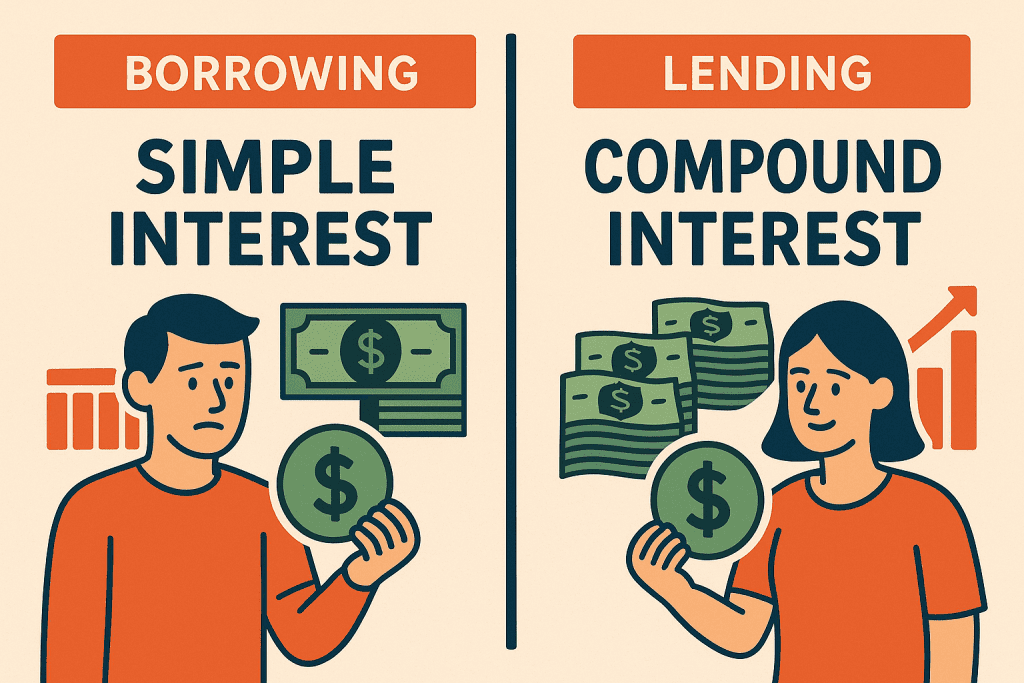
1) Borrower’s Perspective — Keep It Simple
When you’re borrowing money, the simpler the calculation, the better.
- Simple Interest Loans
- Interest is charged only on the original principal.
- Example: Borrow $10,000 at 5% simple interest for 3 years → Total interest = $1,500.
- Predictable, transparent, borrower-friendly.
- Compound Interest Loans
- Interest is charged on both the principal and accumulated unpaid interest.
- Example: Borrow $10,000 at 5% annual compound interest for 3 years → Total interest ≈ $1,576.
- Debt grows faster the longer it lasts.
👉 Borrower’s Strategy: Favor simple interest whenever possible. If stuck with compound interest (credit cards, student loans, mortgages):
- Pay more than the minimum to cut down principal early.
- Avoid unnecessarily long loan terms.
- Consider refinancing if rates fall, but weigh the costs.
2) Lender’s Perspective — Let Compounding Work for You
When you’re lending money or investing, compounding is your greatest ally.
- Simple Interest Returns
- Interest accrues only on the original loan.
- Example: Lend $10,000 at 5% simple interest for 10 years → Total interest = $5,000.
- Compound Interest Returns
- Each year’s interest earns its own interest.
- Example: Lend $10,000 at 5% annual compounding for 10 years → Total interest ≈ $6,289.
- Higher compounding frequency = higher return.
👉 Lender’s Strategy: Choose compound interest whenever possible. That’s why banks:
- Charge borrowers compound interest, but
- Often pay savers lower, less frequent interest.
For individuals: reinvest dividends and interest, start early, and let time multiply returns.
3) The Trade-off — Two Sides of the Same Coin
- Borrowers win with simple interest because debt growth is limited.
- Lenders win with compound interest because returns snowball.
That’s why:
- Credit cards (daily compounding) are a nightmare for borrowers but a gold mine for issuers.
- Savings accounts and bonds (compound interest) reward patient savers and long-term investors.
4) Practical Takeaways
- When Borrowing:
- Seek simple interest loans where possible.
- For compound interest loans, pay down principal aggressively.
- Avoid carrying revolving credit (like credit cards).
- When Lending or Investing:
- Maximize compound returns.
- Reinvest interest/dividends to accelerate compounding.
- The earlier you start, the stronger the snowball effect.
5) 30-Second Summary
- Borrowers should prefer simple interest and minimize compounding exposure.
- Lenders and investors should prefer compound interest to harness exponential growth.
- The same math can be a trap from the borrower’s side or a treasure chest from the lender’s.
- Smart financial strategy is not about changing the formula — it’s about choosing your side wisely.
